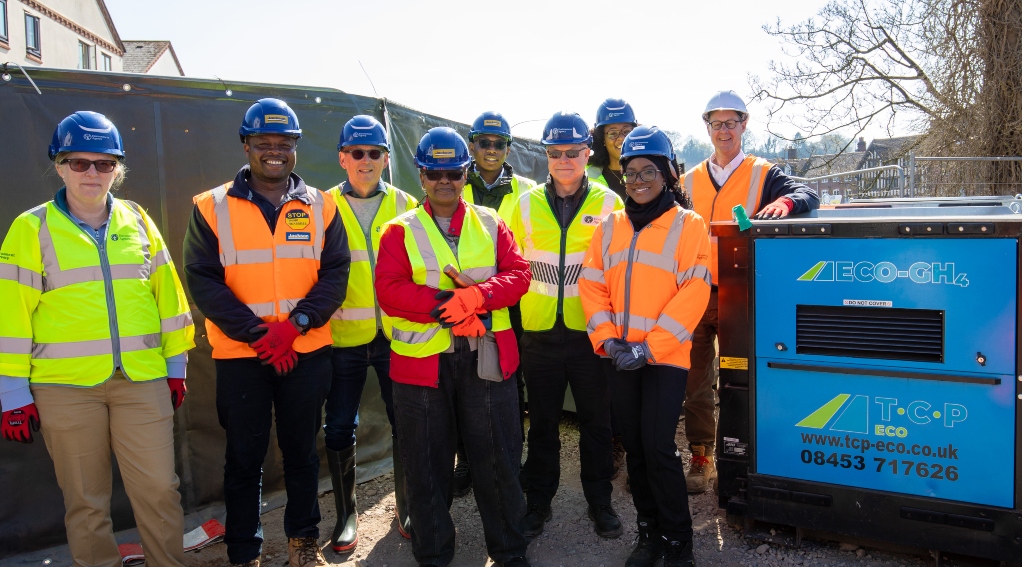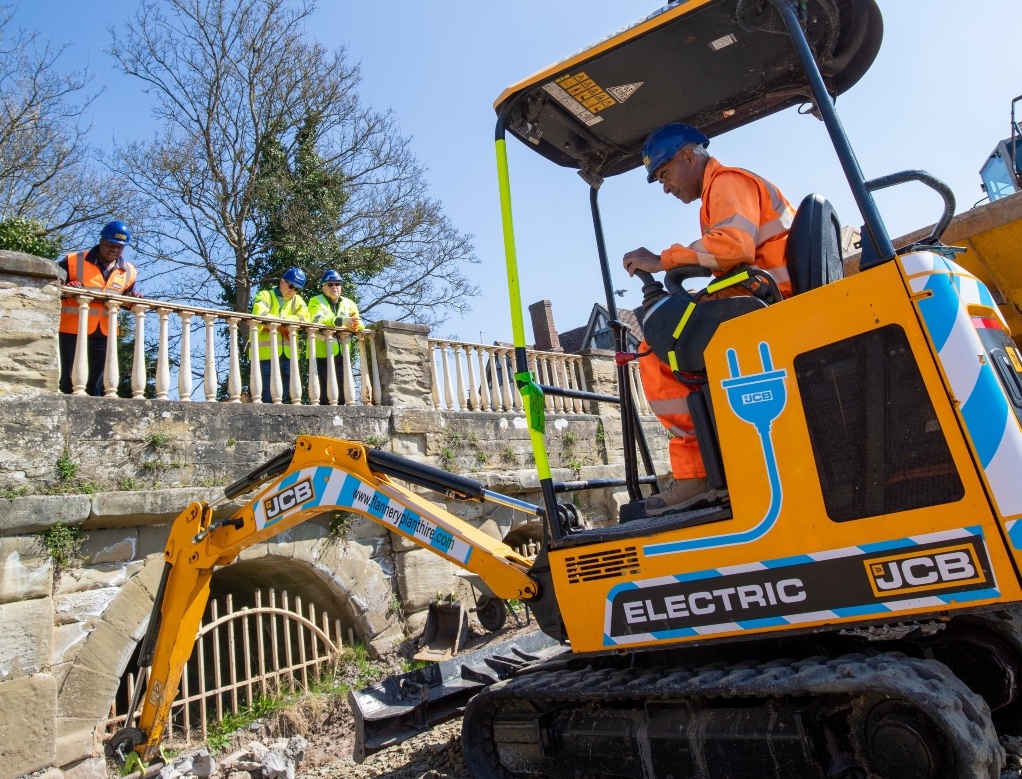The Jackson team at Bewdley recently welcomed visitors from a number of Environment Agency’s (EA) teams to demonstrate some of the pioneering technologies they have been developing.
Jackson is based at the Worcestershire town constructing a flood risk management scheme on behalf of the EA, and is working with established supply chain partner TCP Eco to test the use of solar photovoltaic (PV) in charging electric plant, and the use of a hydrogen fuel cell and solar PV to power a bubble curtain.
These projects are part of a one-year trial made possible through funding from the EA’s Net Zero Carbon Innovation Pathway Fund.
A bubble curtain is a system that creates a wall of compressed air to form a wall of bubbles in water. It is being used at Bewdley to create an exclusion zone to discourage fish spawning in an area where riverbank works are planned for later in the spring. The bubble curtain also has acoustic shielding properties to minimise impact on species sensitive to noise and vibration

Innovation
The system that powers the bubble curtain at Bewdley can take in a mix of power inputs from solar PV and hydrogen to mains electric and HVO generators, which power the curtain during the day and charge a battery, so the system can run silently at night and not disturb residents.
The visitors also saw a demonstration of an electric mini-digger digging a culvert almost silently.
The machine was charged in the Bewdley compound using a charging system comprising a limited mains power connection together with a significant solar PV input (12kW). The system is used to charge two EV cars for staff during the day and then to charge the mini-digger overnight. A full charge provides the digger with four hours of digging time, enough for a typical working day.

